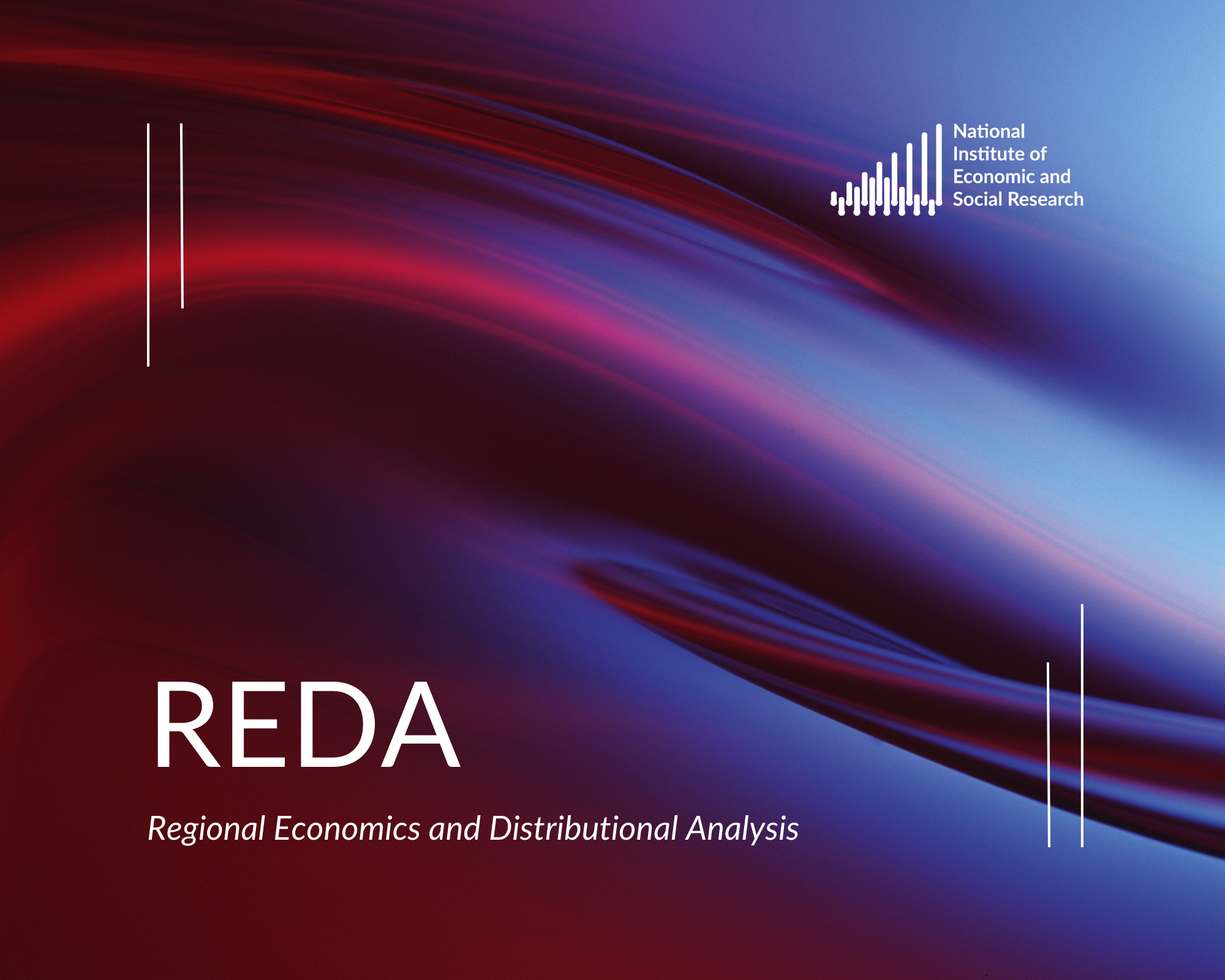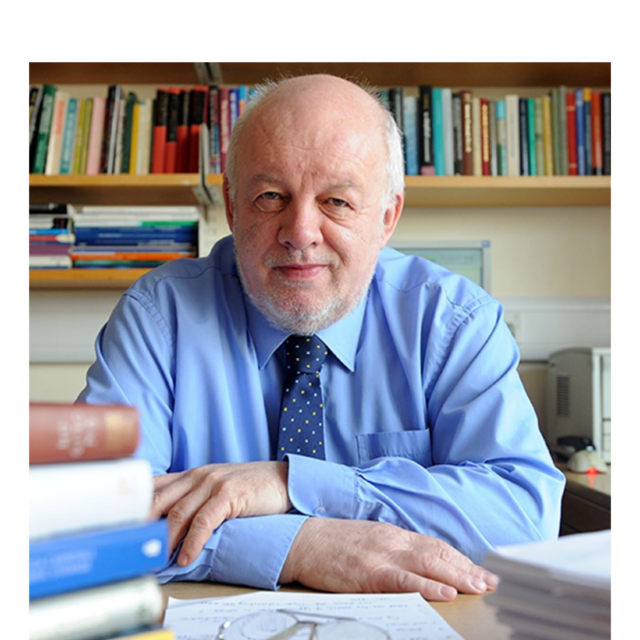Regional Economics and Distributional Analysis (REDA) at NIESR
NIESR is pleased to announce the creation of a Regional Economics and Distributional Analysis (REDA) modelling unit.

Co-led by Arnab Bhattacharjee and Adrian Pabst, NIESR’s new Regional Economics and Distributional Analysis (REDA) modelling unit combines rigorous analysis of UK regions and households with original policy proposals.
Vision
Our vision is to carry out high-quality, high-impact research that will inform decision-making on regional regeneration across the UK and targeted help for the hardest hit households. We apply our conceptual framework and evidence base to improve public understanding, policy and practice. Our ambition is to design better policy interventions that:
- Reduce disparities between and within regions
- Support the most vulnerable households
- Help build a more resilient economy
The main beneficiaries of our work are researchers, journalists and policy-makers at the level of local authorities, city-regions and central government.
Track record
NIESR has a long history of assessing the impact of global economic and social forces on households and markets, sectors and regions in the UK. Of all the advanced economies, the UK has one of the highest levels of regional and household-level inequality – deep disparities of income, wealth and health both between and within regions as well as across the household distribution.
In Chapter Two of our quarterly UK Economic Outlook, we track how the devolved nations of Scotland, Wales and Northern Ireland, as well as the English regions are evolving in terms of economic output, productivity, employment and inactivity. We have also analysed the conditions of households across the income distribution, highlighting the increase in poverty and destitution as a result of Covid-19 and the cost-of-living crisis.
This work has gained traction among policymakers and in the press, with the Chancellor’s package of support measures to help with the energy price hike announced on 26 May 2022 mirroring a number of our proposals in the Spring Outlook published on 9 May 2022. Our work on low-income households running out of their savings by the end of 2024 has been frontpage news in major national newspapers.
The ongoing research is also shaping the work of the 2070 Commission and the NIESR-based Productivity Commission.
Ambition and approach
NIESR’s new Regional Economics and Distributional Analysis (REDA) will take this work to the next level by modelling inter-regional and inter-sectoral spill-overs but also promote greater understanding of how household finances will affect consumption and growth in different parts of the country. We will focus on core interdependencies and transmission channels of shocks between the UK economy and the regions, as well as the evolution of consumption shares.
Our research will explore whether city-led development based on agglomeration effects will support efforts to ‘level up left-behind’ places or whether we need new approaches and policies to regenerate communities that have lost out since deindustrialisation and the speeding up of globalisation.
We will do this by deploying NIESR’s unique modelling capability. In addition to the National Institute Global Econometric Model (NiGEM), NIESR has its own regional model NiReMS (National Institute Regional Modelling System) and household model LINDA (Lifetime Income Distributional Analysis). Both these models are unique to the Institute, and they are vital to our understanding of the forces that affect people’s lives and to our effort at designing better policies.
NiReMS models the economic evolution in the three devolved nations of Wales, Scotland and Northern Ireland and the English regions (NUTS1 level). This includes measures of economic output, employment, inactivity, and productivity – all of which are key to the government’s ‘Levelling Up’ agenda. LINDA models the impact of the economy on household incomes, including levels of poverty. It can also model variations to taxation. The distributional analysis that LINDA provides is of growing interest as inequalities of income and asset grow and millions risk sliding into debt and destitution.
Based on our macroeconomic model NiGEM, we will integrate our regional model NiReMS with our household-level model LINDA. The plan is to provide a synthesis of dynamic microsimulation with a spatial regional econometric model. This will enable us to design better policies by simulating the impact of targeted policy interventions. Further, this integration will provide important feedback effects from the regional level back to the national model – an initiative that will be a new innovation in the UK.
NiReMS and LINDA have been used not only in our own outlook work but also for projects funded by government departments (e.g. HMT, BEIS) and charitable foundations (e.g. Trussel Trust). The governments of the three devolved nations will be interested, as will be city-regions and mayoralties, in their negotiations of further devolution deals.
Staff
Co-led by Arnab Bhattacharjee and Adrian Pabst, REDA is comprised of both economists and social researchers: Eliza Da Silva Gomes, Max Mosley, Urvish Patel and Katharine Stockland. We work closely with NIESR fellows and colleagues, including Diane Coyle, Geoffrey Hewings, Philip McCann, Lorna Unwin, Bart Van Ark, Tony Venables and Andy Westwood.
Research Themes
- Regional analysis
Ongoing development of our inhouse regional model NiReMS (National Institute Regional Modelling System) has been providing short and medium run quarterly projections for the regional economies of the UK at the NUTS1 Government Office level (devolved nations and English regions). These regional projections together with conjunctural, political and social commentary based on the projections are being published in Chapter 2 of NIESR’s quarterly UK Economic Outlook. Lately, NiReMS has been integrated with NIESR’s microsimulation model LINDA (Lifetime INcome Distribution Analysis) to extend modelling from a representative agent setting to a heterogenous agent model. Together, regional projections are linked to national aggregates computed by NIESR’s global macro-econometric model NiGEM.
Further developments are planned. A regional dashboard will be collated from diverse data sources at a finer regional level covering all parts of the UK. Based on this dashboard, a regional regeneration index will be constructed tracking potential and progress in ‘levelling up’. The regional model will be developed further and extended to the city region and local authority levels, in a way that can be aggregated to the UK macroeconomy. Importantly, the fully developed functional model will allow counterfactual analyses of investments in different places, using alternate instruments (such as transport, hospitals or skills), time schedules and outlays, in terms of benefits locally and the UK as a whole. This will place place-based policies on a much sounder evidence base.
- Household analysis
Our team will build on the work undertaken with our dynamic microsimulation model LINDA. This work so far has been to gain a clear understanding of income inequalities across the household distribution, both between and within regions. Our team has focused on estimating the effect of rising prices throughout the cost-of-living crisis, not only to determine the size of shocks but also to provide analysis into the distributional impact of the combined shocks to energy, food and housing costs.
The overall effects are, first, household with no savings; second, destitute households; third, the growing number of households spending more on food and energy than they have in disposable income (which we denote as the ‘hardest hit households’). Our household analysis has provided policy-makers with a clearer insight into the distributional consequences of different policy interventions. For example, this work has enabled us to show the imprecise nature of the Energy Price Guarantee, including the effects of policy alternatives like the Variable Price Cap.
- Model development and integration
We will develop our models NiReMS and LINDA by incorporating a series of economic and social indicators, including economic output, productivity, employment, income, wage growth, housing, access to public services, educational attainment, health, life expectancy, community strength, and life satisfaction. The other development will focus on a higher degree of granularity in our measurement than the 12 regions (NUTS 1 level) or the 40 regions (NUTS 2 level) by comparing the 382 local authorities in the UK with the 228 Travel To Work Areas (TTWAs). Our aim is to model more comprehensively inter-regional and inter-sectoral spill-overs, but also how the pressure on household finances will affect consumption and growth in different parts of the country.
Methodologies
Our team has a knowledge and expertise in a range of methodologies. We have experience of working with big data, e.g. from the Wealth and Assets Survey (WAS) and the Labour Force Survey (LFS). We also have extensive experience of primary data collection and analysis using standardised tools, bespoke measures and survey data, both in relation to quantitative and qualitative approaches.
External Engagement
A core activity of REDA will be external engagement – bridging research and practice, influencing policy and ensuring that research not only reaches stakeholders quickly but that they are involved in the research process from the outset. We will do this through a range of activities e.g.
- Dissemination activities aimed at stakeholders, e.g. funders, policy-makers, journalists, private sector organisations and civil society groups. These will take the form of face-to-face events i.e. webinars/seminars, conference presentations and roundtable events. We will also produce accessible reports, infographics, blogposts, op-eds and podcasts, and engage with social media to disseminate our research findings as widely as possible.
- Set up a policy simulation arm that can advise Local Authorities, mayoralties, city-regions, as well as politicians and civil servants in Westminster and Whitehall. Built into this will be a subscription model or a bespoke analytical service, e.g. short simulation exercises to help inform ongoing negotiations on further devolution deals.
Advisory Board
We will recruit an advisory board of stakeholders e.g. researchers, decision- and policy-makers at local, regional and national levels, business organisations, civil society groups and funders. We will hold an annual meeting of the advisory board to support us in taking the work forward by developing new and timely research questions, projects and collaborations.
Selected Publications
Bhattacharjee, A., Hewings, G., Pabst, A. and Szendrei, T. (2023) ‘NiReMS: a regional model at household level combining spatial econometrics with dynamic microsimulation’, NIESR Discussion Paper 547, 23 February
Bhattacharjee, A., Mosley, M. and Pabst, A. (2022a), Box E: No quick respite from the cost-of-living crisis, National Institute UK Economic Outlook (Summer)
Bhattacharjee, A., Mosley, M. and Pabst, A. (2022b), ‘A ‘Variable Energy Price Cap’ to Help Solve the Cost-of-Living Crisis’, NIESR Policy Paper
Bhattacharjee, A. Mosley, M., Pabst, A. and Szendrei, T. (2022a), ‘UK Regional Outlook: Winter 2022 Chapter 2’, in National Institute UK Economic Outlook – National Institute of Economic and Social Research, February 2022
Bhattacharjee, A. Mosley, M., Pabst, A. and Szendrei, T. (2022b), ‘UK Regional Outlook: Spring 2022 Chapter 2’, in National Institute UK Economic Outlook – National Institute of Economic and Social Research, May 2022
Bhattacharjee, A., Mosley, M., Pabst, A. and Szendrei, T. (2022c), ‘UK Regional Outlook: Summer 2022 Chapter 2’, in National Institute UK Economic Outlook – National Institute of Economic and Social Research, August 2022
Bhattacharjee, A., Mosley, M., Pabst, A. and Szendrei, T. (2022d), ‘UK Regional Outlook: Summer 2022 Chapter 2’, in National Institute UK Economic Outlook – National Institute of Economic and Social Research, November 2022
Bhattacharjee, A., Pabst, A., and Szendrei, T. (2022b), Box F: The Northern Ireland Protocol–Lost Opportunities for Northern Ireland?, National Institute UK Economic Outlook (Autumn), pp. 73-75
Chadha, J.S. (2022), ‘Commentary: The Great Divides’, National Institute Economic Review, no. 259 (February), pp. 1–6
Ebell, M. (2017), ‘Regional Inequality in Productivity in the UK: A Closer Look’, NIESR General Election 2017 – Briefing No.2
Pabst, A. (2021), ‘Commentary: Rethinking Regional Regeneration’, National Institute Economic Review, no. 258 (December), pp. 1-8
Sainsbury, D. (2020), ‘How to solve the productivity puzzle and speed up the UK’s economic growth?’, 2020 Prais Lecture
For further information on the project, “Building a Regional Regeneration Index to Track Socio-Economic ‘Levelling Up’” including the research aims and methodology, can be found here.
Further details of NIESR’s work regarding regional regeneration and levelling up is available within our dedicated topic hub.



